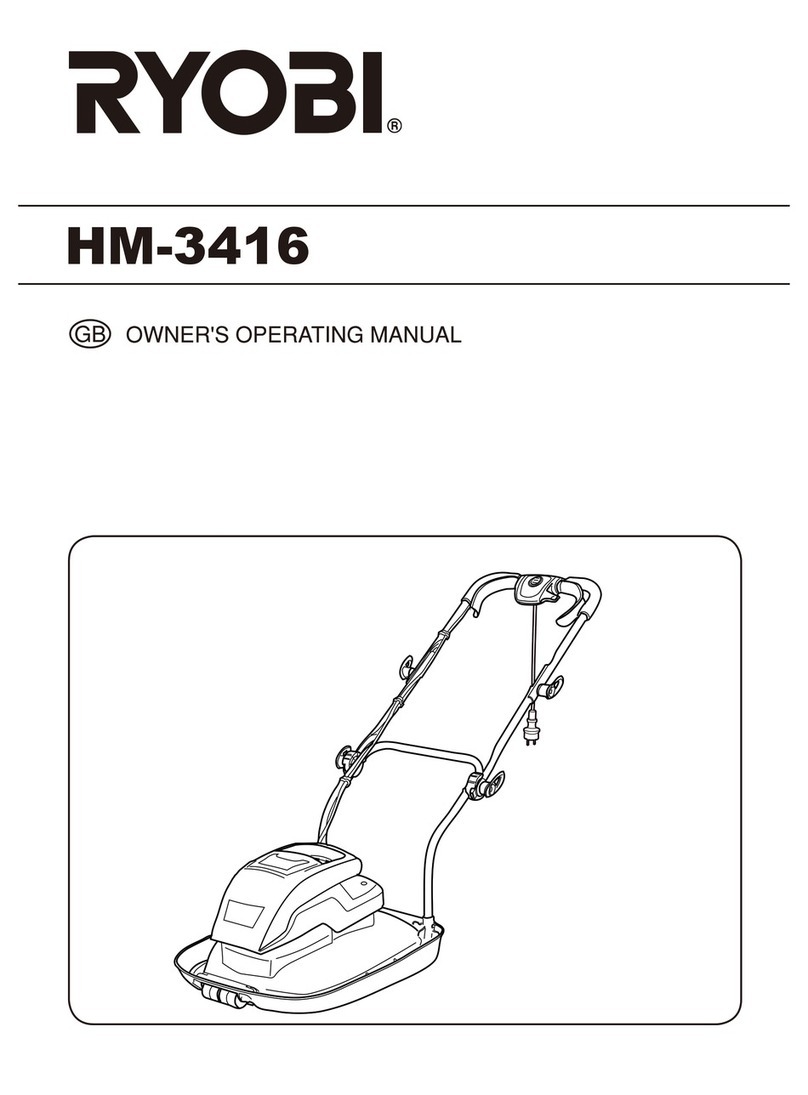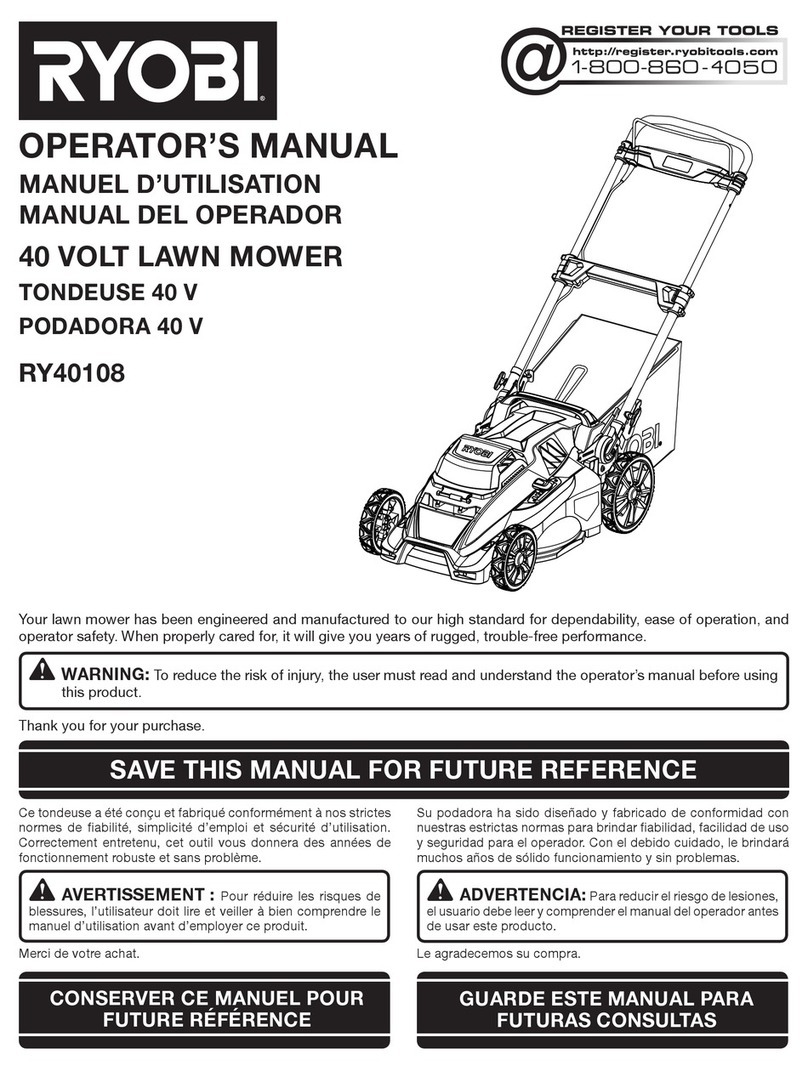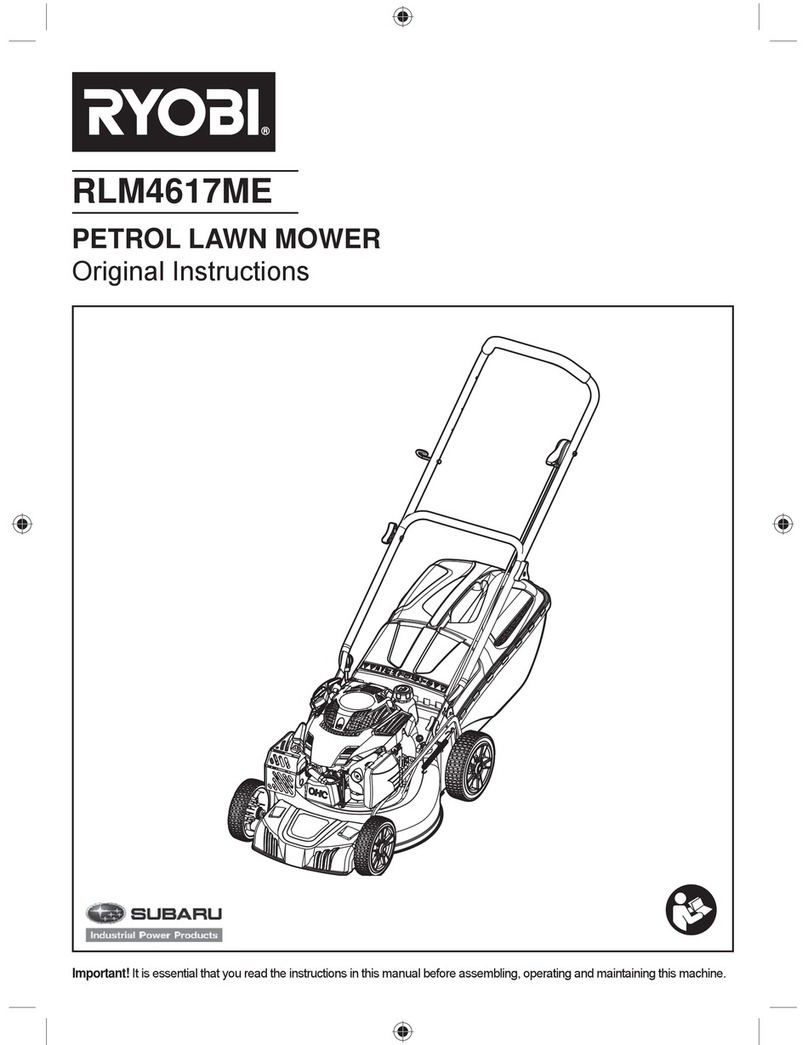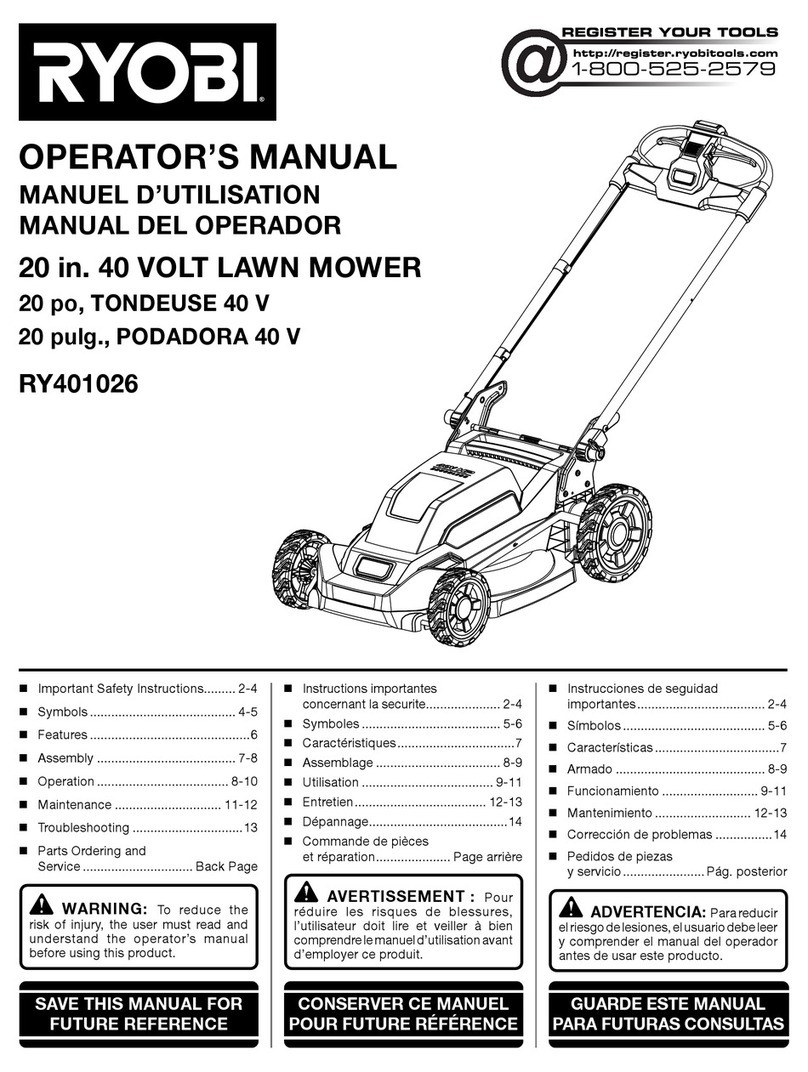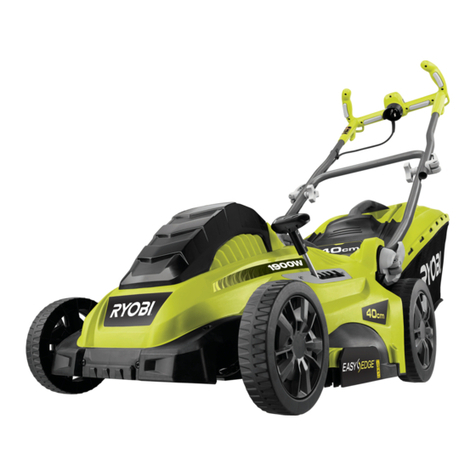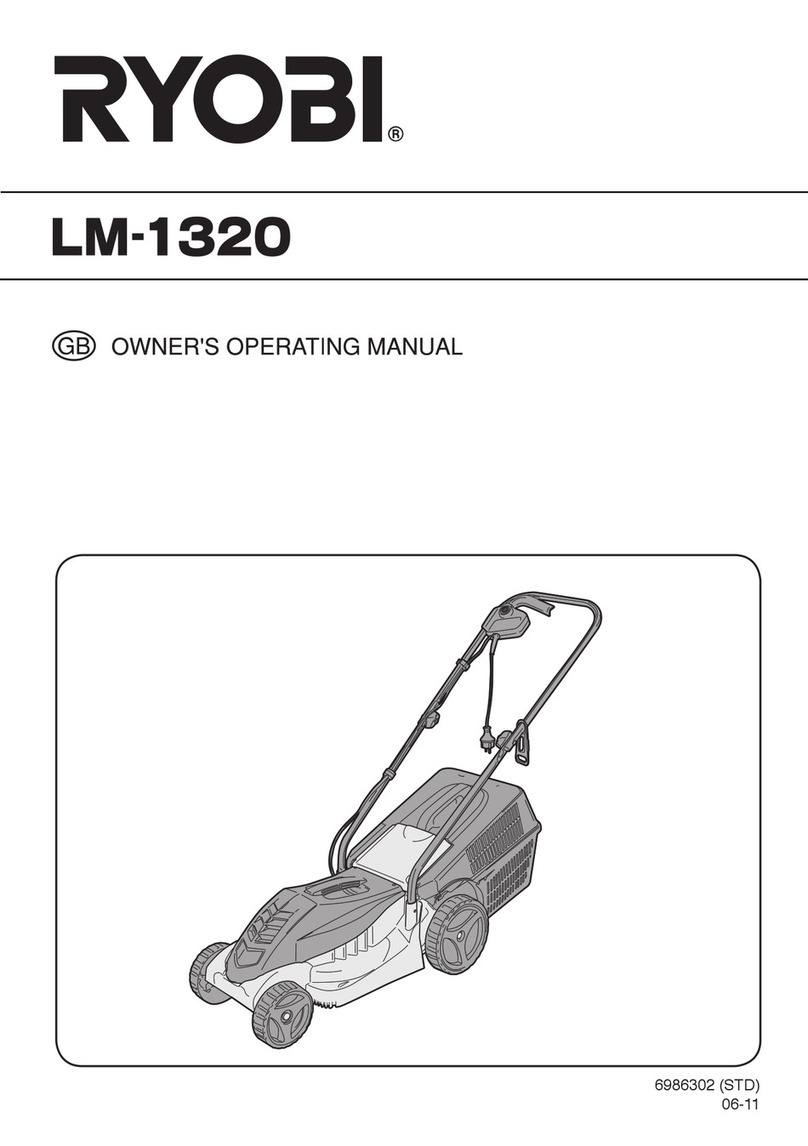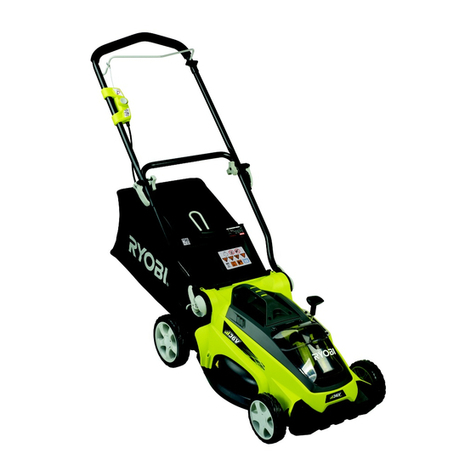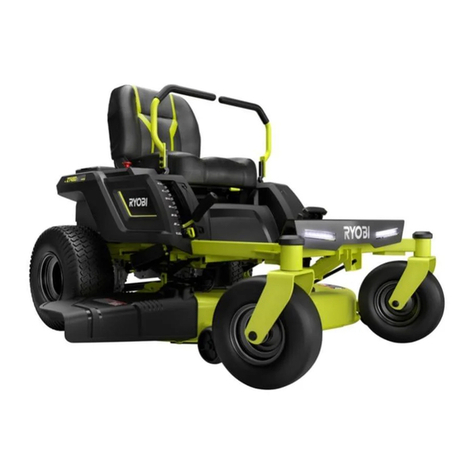
Remember, string or wire may entangle
with the blades.
■Before use, always visually inspect the
product to ensure that blades, blade nuts,
and the cutter assembly are not worn or
damaged.
■Replace worn or damaged blades and nuts
in sets to preserve balance.
■Replace worn or damaged parts before
operating the product.
■Never direct discharged material toward
anyone. Plan the mowing pattern to avoid
discharge of material toward bystanders,
roads, sidewalks, windows, and cars. Also,
avoid discharging material against a wall or
obstruction, which may cause the material
to ricochet back toward the operator.
OPERATION
■The product must be started with the user
properly seated and behind the steering
wheel. Never start the product if:
●not all four wheels are on the ground
●the side discharge chute is exposed and
is not protected by the bagging kit or
mulch cover
●hands and feet of all persons are not
clear of the cutting enclosure
■Disengage the blades when the product is
not in use.
■Never use the product in a closed area.
■Stop the blade when crossing gravelly
surfaces to avoid discharging gravel
and rocks . Drive the product slowly and
carefully to avoid loss of control.
■Turn on the motor carefully according to
instructions, and keep hands and feet
away from blades. Do not put hands or feet
near or under rotating parts.
■Do not mow in reverse unless absolutely
necessary. Always look down and behind
before and while reversing.
■Before and while reversing, look behind
and down for small children, bystanders,
and pets.
■Use extra care when approaching blind
corners, shrubs, trees, or other objects
including overhanging shrubs, which may
block your view.
■Slow down before turning.
■Slopes are a major factor related to loss of
control and tip-over accidents, which can
result in severe injury or death. Operation
on all slopes requires extra caution. If you
cannot back up the slope or if you feel
uneasy on it, do not mow it. Never use the
product on steep slopes greater than 15°.
Make a copy or cut out the "Slope Guide"
at the back of this manual and use it to
determine if your slope is too steep for safe
operation.
●Never attempt to ride on a steep slope
or mow a slope that is greater than 15°.
●Mow up and down; not across the face
of slopes.
●Avoid holes, ruts, bumps, rocks, property
stakes, or other hidden objects. Uneven
terrain could overturn the product. Tall
grass can hide obstacles.
●Use a slow speed so you will not have to
stop suddenly or accidentally accelerate
while on a slope.
●Do not mow on wet grass when on a
slope. Tyres may lose traction and you
may lose control.
●Always keep the direction control switch
in the forward position when going down
slopes. Do not shift to neutral and coast
downhill, which may cause you to lose
control of the product.
●Avoid starting, stopping, or turning
on a slope. If the tyres lose traction,
disengage the blades and proceed
slowly straight down the slope.
●Keep all movement on slopes slow and
gradual. Do not make sudden changes
in speed or direction, which could cause
the product to roll over.
●Use extra care while using the product
with attachments; they can affect the
stability of the product. Do not use on
steep slopes greater than 15°.
●Do not try to stabilize the product by
putting your foot on the ground.
●Do not use the product near drop-offs,
ditches, excessively steep slopes,
or embankments. The product could
suddenly roll over if a wheel goes over
the edge or if the edges caves in and
result in death or serious personal injury.
■Never leave a running product unattended.
Always turn off the blades, engage the
parking brake, stop the motor, and remove
the start key before dismounting.
4| English
